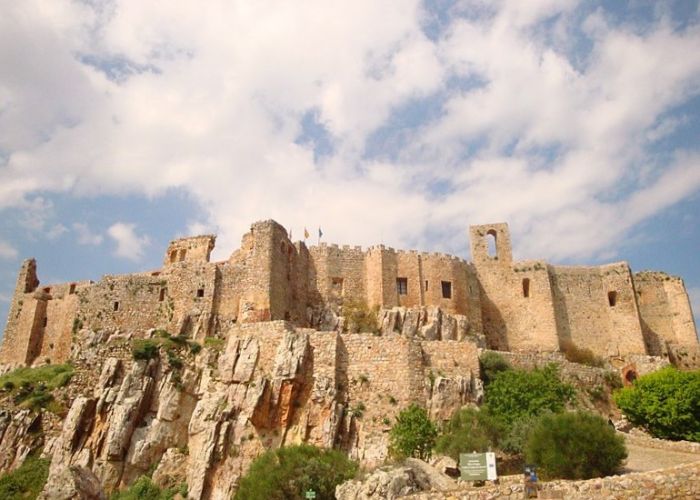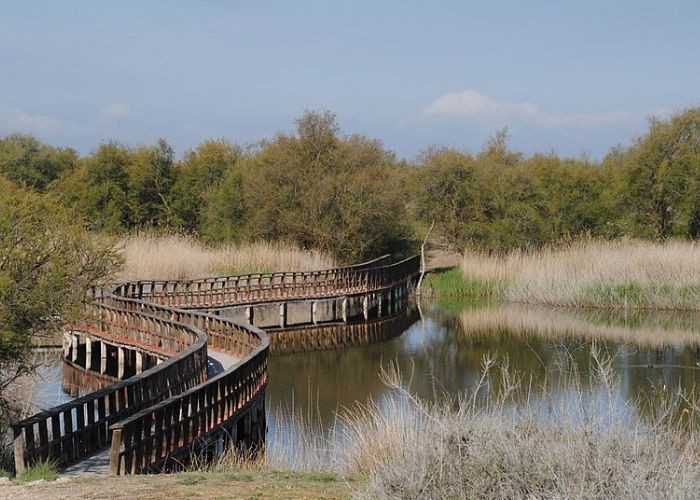CIUDAD REAL – Ciudad Real is known as the sleepy capital of the province of the same name in Castilla-La Mancha. Yet the region has a rich history, high-quality cultural events, beautiful nature and good food.
Take Almagro. Every year at the beginning of summer, this historic city is fully dedicated to the theatre of the 17th and 18th centuries. Performances, music performances and lectures take place everywhere. Even the restaurants serve 17th-century meals! The most beautiful location is the beautiful open-air theatre (Corral de Comedias), the only theatre from the Golden Age in Spain that has been preserved. Here you imagine yourself in the 17th century.
The former capital of La Mancha
And Almagro has more to offer than just theatre. This was the old capital of La Mancha and still has many beautiful old buildings. The Fúgar family, an important banking family from the time of Emperor Charles V, built a magnificent palace here.
Wander through the old streets of the ‘barrio noble’ and visit beautiful old churches such as those of San Agustín and Madre de Dios or the La Encarnación monastery and you can still really taste the Spain of Cervantes.
Pickled eggplants
Speaking of tasting: the typical local pickled aubergines are also worth a try. The recipe dates back to the Moors and has not changed substantially since then.
Handmade lace
Almagro is traditionally also known for its high-quality handmade lace. You can still see women on the street with traditional bobbin lace. There is even an entire museum dedicated to it: the Museo del Encaje.
The Knighthood of Calatrava
And the province of Ciudad Real has much more to offer history buffs. In the Middle Ages, this was a hard-fought area between Christians and Moors. Many places remind us of that illustrious period.
The original Calatrava (nowadays Calatrava la Vieja) was one of the oldest settlements of the Moors in Spain. Many impressive remains of that Moorish period can still be found here.
After the takeover by the Christians, the knighthood of Calatrava was founded here. The members of this order were monks and warriors. They had to prevent the strategically located Calatrava from falling into the hands of the Moors again. The order nowadays mainly has a ceremonial function but has had a lot of influence in this region. Many villages are named after the order.

Moral de Calatrava
Moral de Calatrava is such a historic village. Here you will find the old headquarters of the order of Knights of Calatrava. There is also a beautiful church, the Iglesia de San Andrés Apóstol, with some beautiful frescoes. The church is built on the remains of an old Moorish watchtower.
Calzada de Calatrava
You will also find many historical places in Calzada de Calatrava. The ruins of an old castle can be found on both hills on either side of the village. On one side you will find the castle of Calatrava la Nueva and on the other side is the castle of Salvatierra.
In this town, you can spend the night, completely in medieval style, in the old guest house of the order of knights: the Hospedería de los Calatravos. Film fans can also indulge themselves here. There is a lively film festival here every year and, coincidence or not, this is also the birthplace of renowned Spanish director Pedro Almodóvar.
Not far away is the monumental castle of Sacro Convento de Calatrava la Nueva, one of the most important surviving medieval castles in Spain.
Volcanoes
Not much into history, but geology and nature? Even then there is plenty to experience. There used to be a lot of volcanic activity in this region and a lot of it can still be seen. The most famous volcano is the Cerro Gordo. It is located in the municipality of Granátula de Calatrava. The volcano is great to visit: there are guided tours and there is a museum. The volcano even has its app.
Wetlands
Also special are the many wetlands. This has everything to do with the fact that the river Guadiana originates here. Nature lovers can indulge themselves in beautiful nature parks such as Lagunas de Ruidera and Las Tablas de Damiel. Ossa de Montiel is the perfect start for a nice walk. Here is also the cave of Montesinos, which is described in Don Quixote.

Culinary tradition
Between the two nature parks, you will find characteristic villages where you can get acquainted with the rich culinary tradition of La Mancha. In Tomelloso you will find a museum entirely dedicated to the famous Manchego cheese. Valdepeñas is the centre of the wine region of the same name and also has its wine museum. This is anyway a beautiful village to visit with many beautiful houses from the 18th and 19th centuries.
Don Quixote and Quevedo And finally, you can’t miss Don Quixote in this part of La Mancha. In the beautiful Almodóvar del Campo, which also appears in the famous novel by Cervantes, you will find a museum that is entirely dedicated to El Quijote. View more than 500 different editions of this masterpiece here.
Villanueva de los Infantes
Picturesque Villanueva de los Infantes, according to some experts, is even the place where the novel begins, even though Cervantes does not mention that place by name. This village is worth a visit in itself for its many historic buildings and churches. And by the way, another literary great is also buried here: Francisco de Quevedo. This poet and satirist wrote his last poems in the beautiful convent of Santo Domingo.


